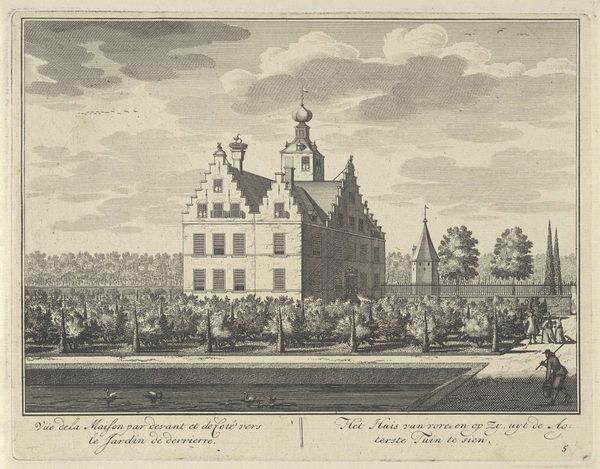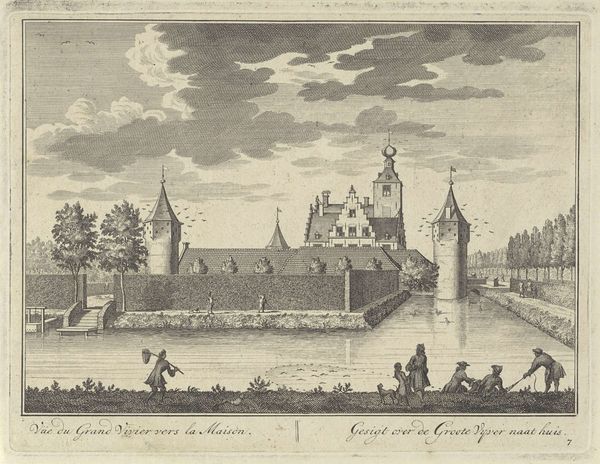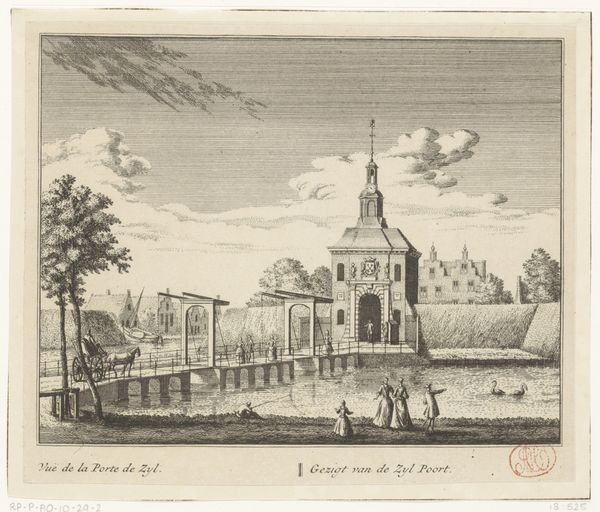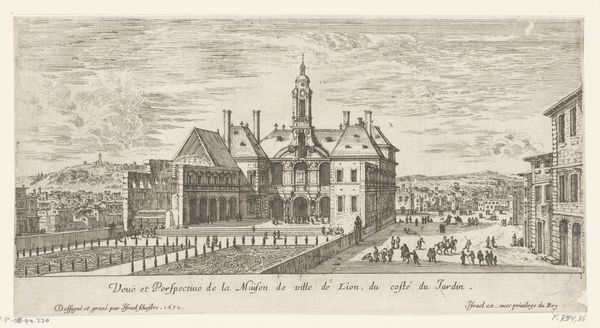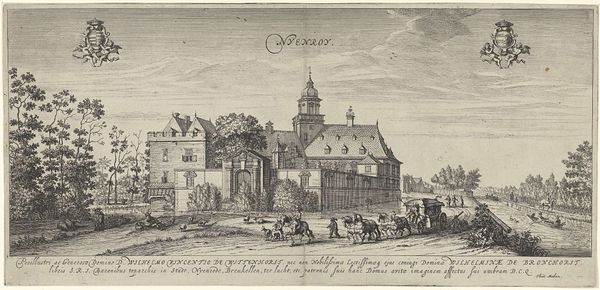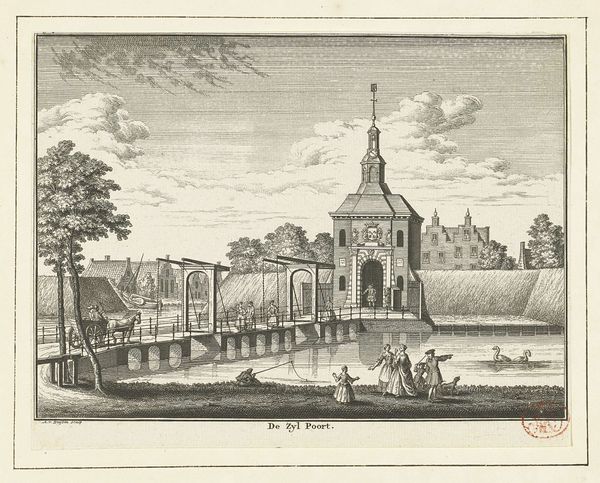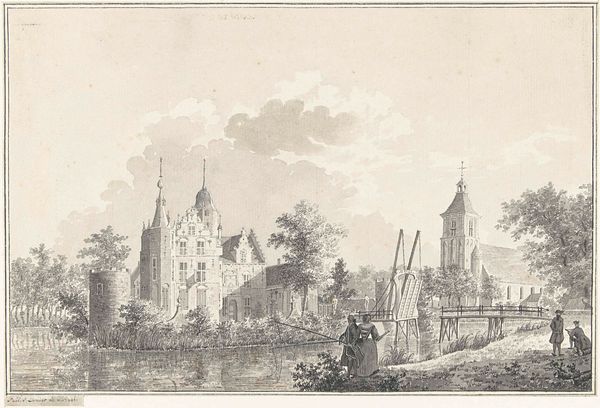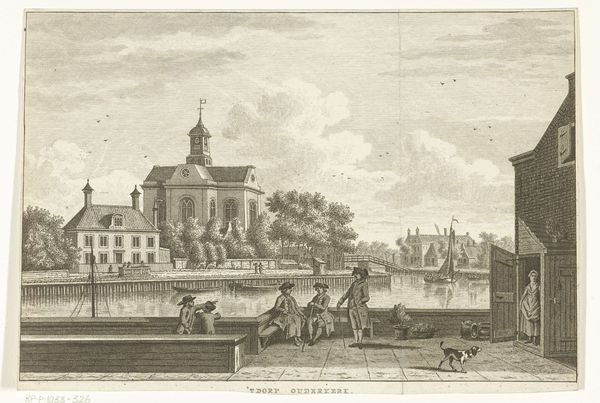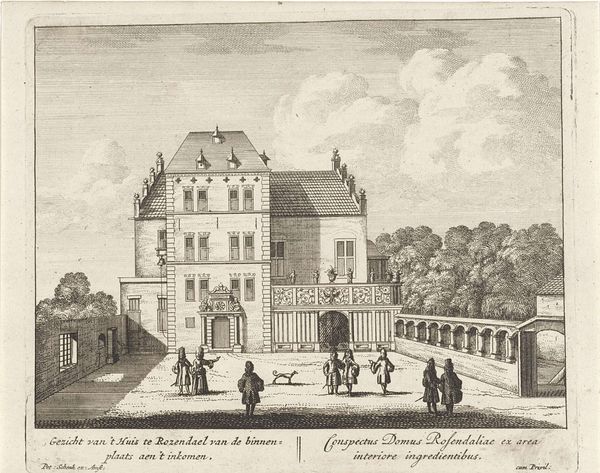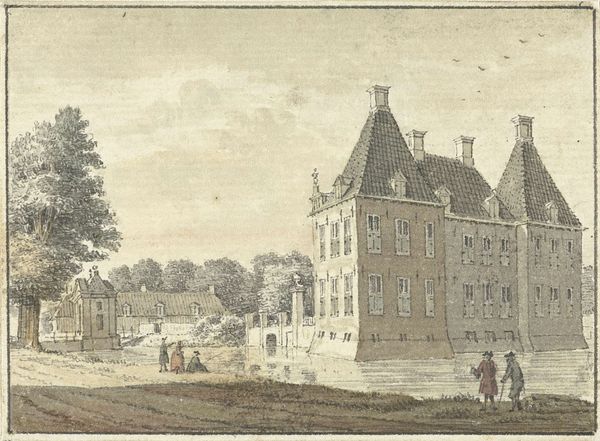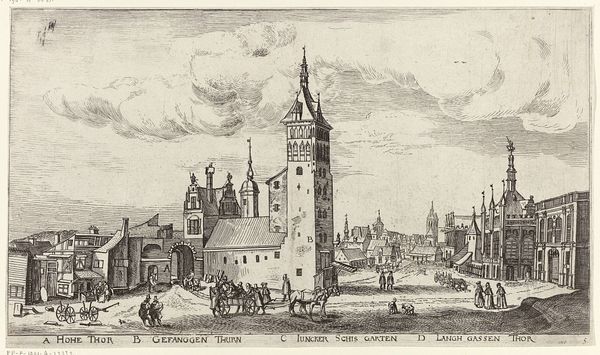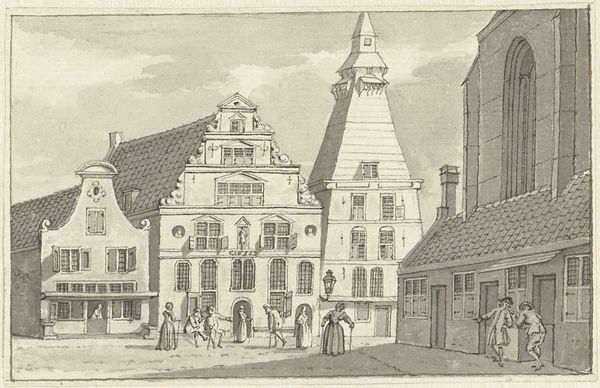
drawing, print, engraving, architecture
#
architectural sketch
#
drawing
#
quirky sketch
#
baroque
#
dutch-golden-age
#
mechanical pen drawing
# print
#
pen sketch
#
old engraving style
#
sketch book
#
landscape
#
personal sketchbook
#
sketchwork
#
geometric
#
pen-ink sketch
#
line
#
pen work
#
cityscape
#
engraving
#
architecture
#
realism
Dimensions: height 158 mm, width 211 mm
Copyright: Rijks Museum: Open Domain
Curator: Here we have "Voorzijde van Kasteel Zuilenstein" or "Front of Zuilenstein Castle," a Dutch Golden Age engraving dating from around 1682 to 1726. What do you make of it? Editor: It’s a rather ordered scene, wouldn't you say? A bit cold. The precise linework renders every brick and cloud with exacting detail, creating a certain detached stillness. Curator: As an Iconographer, what symbols or stories jump out? Editor: The castle itself is of course a powerful signifier. Castles, particularly during this period, symbolized wealth, status, and entrenched power. Observe how the approaching carriage, the meticulously kept grounds, and even the people add to a feeling of privileged containment. Curator: And the technical aspects? The artist, Daniël Stopendaal, demonstrates skillful execution in creating depth through subtle variations in line thickness. The architectural rendering is meticulous. Editor: I notice how the symmetry in the composition emphasizes a balanced social structure as well. Look how that is emphasized by the left and right notations for front and back view respectively. The artist seems invested in capturing an idealized social order. It speaks volumes about cultural values during that time. Curator: Do you find a sense of disconnect between the formality of the castle and the mundane activities occurring on the grounds? Figures are engaging in ordinary pastimes even as this immense building looms behind them. Editor: Absolutely. That juxtaposition speaks to a larger negotiation happening in Dutch society during the Golden Age – a striving to balance the power of wealthy families like the one likely living here, with an interest in embracing a natural everyday flow. A complex balance. Curator: Stopendaal’s precise technique serves to solidify and present this particular worldview with sharp lines. The absence of color, the reliance on stark black and white, makes the imagery very deliberate, doesn't it? Editor: I agree. I think it shows that wealth is less about a visual experience and more about legacy and an expectation. Curator: Fascinating! I believe exploring the tension between rigorous form and the narrative opens many doors to consider this particular work. Editor: Indeed. A snapshot of a society frozen, composed, and pregnant with implications, both celebrated and perhaps a bit anxiously preserved.
Comments
No comments
Be the first to comment and join the conversation on the ultimate creative platform.
